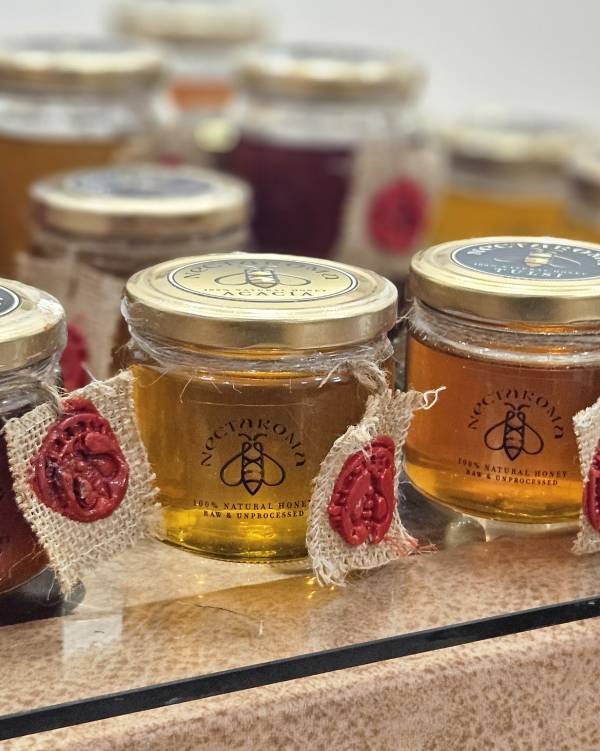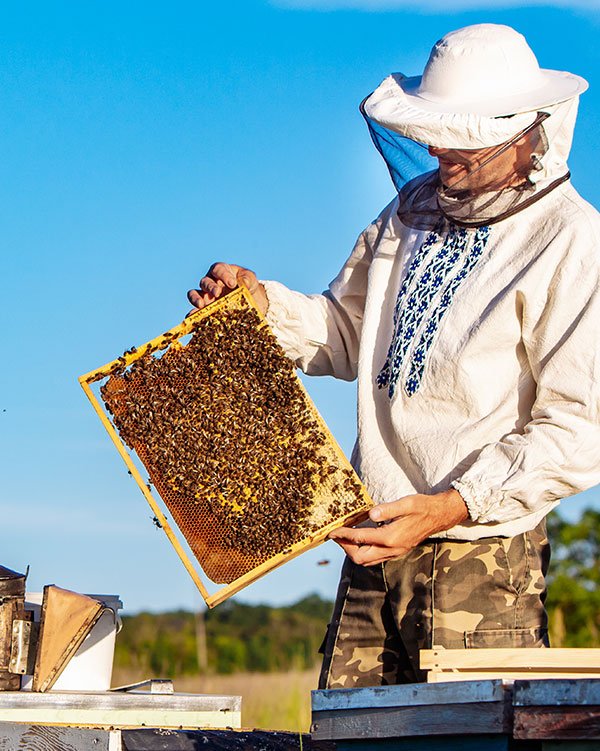1. Raw Honey
Raw honey is often considered the purest form of honey. It is collected straight from the hive and is minimally processed to retain its natural enzymes, vitamins, and antioxidants. Unlike commercial honey, which is heated and filtered, raw honey is unheated and unfiltered, which means it retains more of its nutrients.
This type of honey is typically thick, with a creamy texture, and can vary in color depending on the floral sources of nectar. Raw honey is widely appreciated for its health benefits, including its ability to boost immunity and soothe sore throats. It’s also packed with antioxidants, which help to combat oxidative stress in the body.
2. Monofloral Honey
Monofloral honey comes from the nectar of a single type of flower. This variety of honey tends to have a distinct flavor profile that reflects the specific plant it comes from. Some popular types of monofloral honey include:
- Manuka Honey:
One of the most well-known types of monofloral honey, Manuka honey is harvested from the nectar of the Manuka tree in New Zealand. It is recognized for its potent antibacterial properties and is commonly used for its medicinal benefits, such as healing wounds and treating digestive issues. Manuka honey has a dark, robust flavor and is often used in skincare products due to its healing properties.
- Acacia Honey:
Acacia honey is made from the nectar of the acacia tree and is prized for its light color and mild, sweet taste. It has a smooth, liquid consistency that resists crystallization, making it a favorite for drizzling on foods like pancakes or adding to tea. Acacia honey is high in antioxidants, making it a healthy choice for boosting immunity.
- Lavender Honey:
This honey is made from the nectar of lavender flowers and has a light, floral flavor with subtle herbal notes. Lavender honey is popular for its calming effects and is often used to promote relaxation and improve sleep quality. It’s also a great addition to baked goods or tea.
3. Multifloral Honey
Unlike monofloral honey, which comes from a single type of flower, multifloral honey is made from the nectar of various flowers. This type of honey offers a more complex flavor profile and can vary in taste depending on the plants that are in bloom.
Multifloral honey is often lighter in color and more affordable compared to monofloral varieties, making it a great choice for everyday use. It’s commonly used in cooking, baking, and as a natural sweetener for tea and desserts.
4. Buckwheat Honey
Buckwheat honey is a dark, robust honey made from the nectar of buckwheat flowers. Known for its strong flavor, buckwheat honey has a molasses-like taste that can be an acquired one for some. It is also one of the most nutrient-dense types of honey, packed with antioxidants and minerals like iron and zinc.
Buckwheat honey is often used to help soothe coughs and sore throats due to its high levels of antibacterial properties. Its bold flavor also makes it ideal for use in cooking, particularly in savory dishes or as a glaze for meats.
5. Clover Honey
Clover honey is one of the most common types of honey available on the market. It is made from the nectar of clover plants and is known for its mild, sweet taste and light amber color. Clover honey has a smooth consistency and is often favored for its versatility.
It can be used in a variety of ways, from adding it to tea and smoothies to drizzling over yogurt and baked goods. Clover honey is also rich in vitamins and minerals and is a great option for those looking for a more neutral-flavored honey that can complement a wide range of foods.
6. Sidr Honey
Sidr honey comes from the nectar of the Sidr tree, which is primarily found in the Middle East. It is known for its dark amber color and unique, rich flavor with a slightly herbal undertone. Sidr honey is often prized for its therapeutic properties and is commonly used in traditional medicine.
It is believed to help boost immunity, aid digestion, and even act as a natural remedy for various ailments. Sidr honey is also renowned for its healing properties and is sometimes used to treat wounds and burns.
Conclusion
Honey comes in many varieties, each offering its own unique flavor and health benefits. Whether you prefer the light and floral notes of acacia honey, the rich and robust taste of buckwheat honey, or the medicinal properties of Manuka honey, there is a type of honey for every taste and need.
Exploring different types of honey allows you to enjoy not only the diverse flavors but also the various nutritional and therapeutic benefits they offer. When choosing honey, always opt for raw or minimally processed varieties to ensure you’re getting the maximum health benefits.




